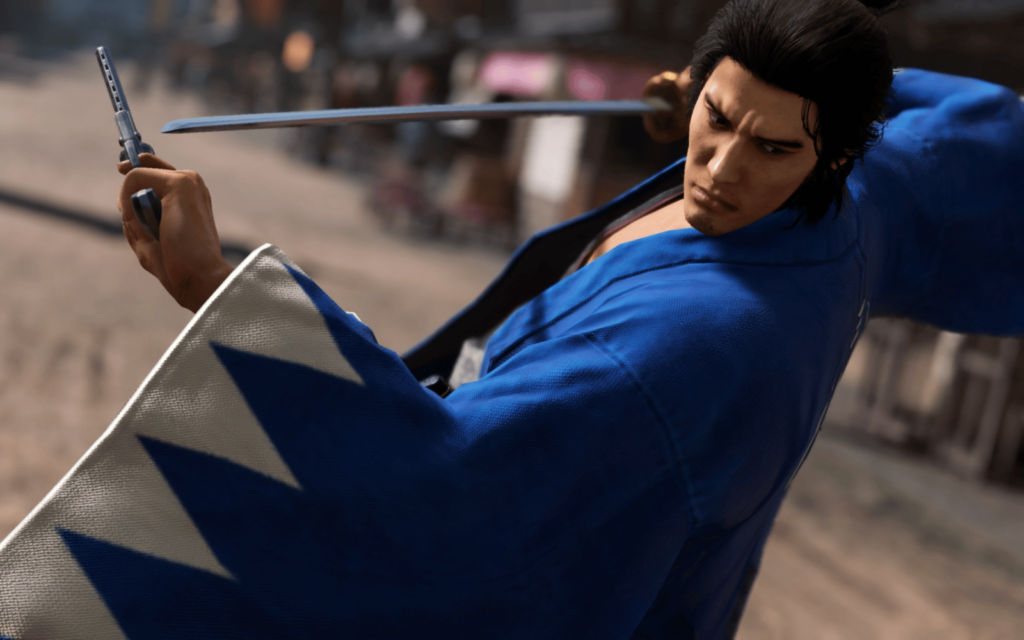Although Like a Dragon: Ishin! can feel dated at times, it still manages to successfully balance a sprawling melodramatic narrative with the absurdity the franchise is known for. If to you that sounds similar to previous games in the franchise, you'd be on the money, except this time you're in 1860s Japan.
-
Story
-
Gameplay
-
Replayability
-
Performance
-
Visuals
The Like a Dragon franchise (previously known as Yakuza in the West) is very much defined by its ability to perform one of the most consistently incredibly tightrope acts in the video game industry. The series is known for weaving sprawling melodramatic narratives of betrayal, vengeance, and found family while also juggling with more overtly absurd pastimes; watching grizzled mobsters succumb to their inner popstar while belting out karaoke never gets old.
Ishin! certainly delivers on that formula, to an almost predictable extent. Yet at its heart, there’s something fresh in its presentation. Something that serves as an exciting spinoff to fans while also acting as a compelling starting point for those that have yet to explore the franchise.
Where’s the Dragon?

Set in 1860s Japan, Like a Dragon: Ishin! ditches organized crime lords and mob bosses for a story of a samurai and an uprising. As Sakamoto Ryoma (effectively franchise protagonist Kazuma Kiryu in a different outfit), players are forced to flee their hometown of Tosa after their adopted father is assassinated by a masked warrior. In a bid for revenge, Ryoma adopts a new identity and begins a years-long investigation into who murdered their “Pops.”
It’s a narrative laced with dramatic pauses and sudden realisations, plot twists, and backstabs that, while occasionally slow, never fail to be engaging. It’s a dense tale too, stuffed with characters who have their own loyalties and allegiances to various factions. A book on Japanese history almost feels like required reading at times given how many era-specific terms are lobbed about in casual conversation.

At times, it’s tough to follow; this isn’t the sort of game that can be played with a podcast in the background. It’s all brought home with excellent performances from dedicated voice actors (subs not dubs) and writing that never speaks down to the audience. Allow yourself to be consumed by Ishin! and there’s no doubt that you’ll be gasping along with Ryoma at every major twist.
Which isn’t even saying anything about the abundance of side stories littered throughout the city of Kyoto. Ishin!’s open world is relatively small in comparison to its contemporaries but that lack of scale never feels like a bad thing. Around every corner lies a small adventure for Ryoma that enables the game to pull off its aforementioned trapeze act. One second you’ll be comforting an emotional child who must say goodbye to his best friend, the next you’re helping a shut-in 20-year-old find some kind of motivation to leave his room.
Ishin! never quite reaches the absurd heights of predecessors. Evidently, Japan in the 1860s was a much more self-serious occasion than modern-day Kamurochō. If anything, we found the lack of silliness to work in the game’s favour. It helps set a more consistent tone, one that’s not as jarring or difficult to accept.
Swords, guns, or both
If you’re looking for over-the-top then Ishin! can still keep you satisfied with its combat system. It manages to be both mechanically deep and surface-level cool. During the game’s many, many fights, Ryoma is able to switch between four distinct combat styles: Brawler, Swordsman, Gunman, and Wild Dancer. The first three are relatively self-evident in their titles, incorporating fists, swords, and firearms respectively, while Wild Dancer uses both a katana and a pistol in a mad flurry of attacks.
Each has its own skill tree that becomes increasingly more complex in a surprisingly short amount of time, unlocking new moves and abilities the more they’re used. In motion, it’s incredibly satisfying and rewards whatever playstyle you fancy. Prefer punching? Just stick with Brawler for tight combos and quick parries. Maybe you’d prefer to dip your toes into everything, a fighter of all styles but a sensei of none? Switching between them is a button tap away, meaning combat can be as simple or complicated as you’d like.

And then there are the special abilities, delivered with as much flare and aplomb as a ringmaster welcoming an audience to the show. Our personal favourite is one move that sees Ryoma stuff an orange into his opponent’s mouth before bringing his foot down on it, for when you need orange juice in a hurry.
Perhaps our biggest complaint with the game is that it, much like the setting, feels dated at times. Given that it’s a PC remake of a PlayStation 3 game, one would expect a few updates to some of the more archaic elements. The menus, for example, are functional yet clunky in how long they take to navigate. The visuals were also a bit of a let-down given that many of the character models and animations feel like they’ve merely been ported from an older console generation rather than remade. Granted, Like a Dragon isn’t a franchise known for pushing the boundaries of visual fidelity nor is it actively ugly, but its age can certainly be felt.
Like a Dragon: Ishin! verdict
Luckily, those gripes hardly get in the way of the overall experience. Like a Dragon: Ishin! is a game developed with a reverence for the franchise, one that occasionally feels too tethered to the past yet still fresh in its execution. It’s a love letter for fans, an invitation to newcomers, and an excellent trip into Japan’s storied history filled with plenty of goons, loons, and bad-ass tunes.





